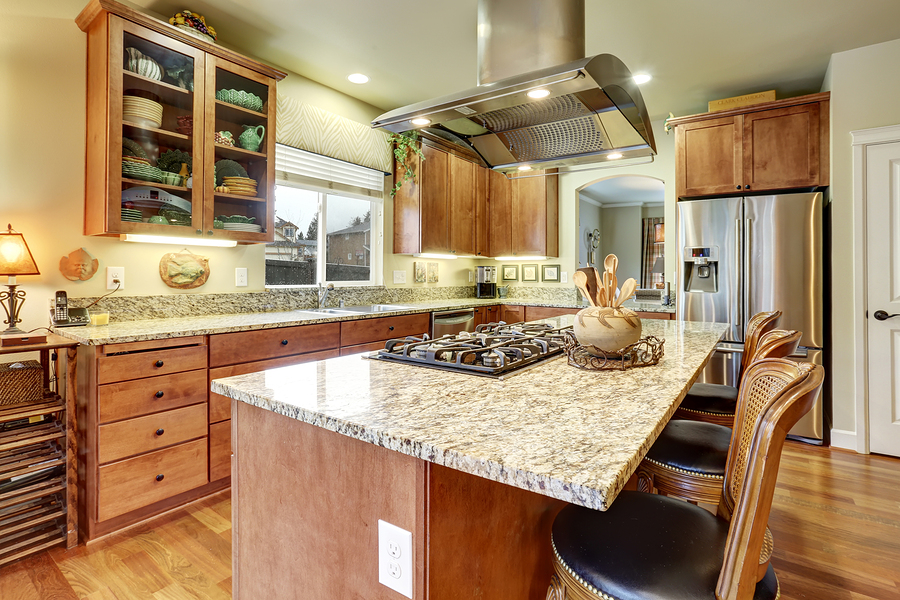
Fall fell on us on September 22 and if you haven’t yet begun your fall home maintenance tasks, it’s time to get started. And, to help, we’ve gathered some tips.
Smoke alarms save lives
Fall and winter see an increase in home fires, according to the American Red Cross, and faulty smoke alarms were to blame for more than 20 percent of home fire deaths. Sadly, nearly 40 percent of the deaths occurred in homes that didn’t have smoke alarms, according to the National Fire Protection Association (NFPA).
If you have smoke alarms in the home, now is the time to check that they’re working properly. Change the batteries if you can’t remember when they were last changed.
Also, ensure that you have enough smoke alarms in the home. They should be installed outside of each bedroom and on all levels of the home.
“If you and your family sleep with the doors closed, install smoke alarms inside sleeping areas, too,” suggests the NFPA.
NFPA also suggests the following:
- Consider connecting your smoke alarms so that when one sounds, they all do.
- Replace all smoke alarms when they are 10 years old
- Use both ionization and photoelectric alarms throughout the home. The former detects flaming fires and the latter will warn you about smoldering fires.
Check the weather-stripping
Windows and doors are notoriously leaky, allowing our toasty indoor air out and that frosty stuff in. Not only is this tough on your utility bills but uncomfortable for the occupants of your home as well.
Weather-stripping is the way to stop the leaks, but it’s not something that lasts forever and periodically needs to be replaced.
Try rattling your windows. If you’re successful, you probably need to replace the weather-stripping.
If you can see daylight around the door frames you’ll need to strip there as well.
It’s an easy DIY project and Sal Vaglica of This Old House offers a handy walkthrough of how to choose the right product and you can get tips on installing weather stripping from the U.S. Department of Energy.
Yes, it’s a bit of a time-consuming task, but one well worth performing. Replacing worn-out weather-stripping can save 10 to 15 percent on your energy bills this winter, according to the U.S. Department of Energy.
Get a tune up
HVAC systems (heating, ventilation and air conditioning) last from 15 to 20 years, if properly maintained. Components within the system, however, have shorter life spans, according to the experts at ThisOldHouse.com. The heat pump, for instance will die at around 16 years after installation.
Since we’re entering into that time of year when our heating systems will start getting heavy use, call in a professional to inspect yours.
If you have an oil heating system, inspect the entire system – tank, line, pipes, fittings and valves – for leaks. for leaks. The Massachusetts Environmental and Energy Affairs department claims that the cost of cleaning up a heating oil leak averages between $20,000 and $50,000.
Have your oil company service the furnace and replace any damaged parts.
Forced air systems require seasonal maintenance as well. At the very least, stock up on filters and change them monthly during fall and winter.
Don’t forget the home’s exterior
Step outside and inspect the exterior home from top to bottom.
- Check the gutters and if they’re clogged, clean them out and then check for leaks. Ensure that the downspouts are still directing water away from the home.
- If you have siding, check to see if it needs caulking.
- Check the siding and caulk it, if needed. Also check the exterior corners, where two walls meet. Caulk there as well, if needed. For answers to questions about what should and should not be caulked, head to com and read their guide.
- If you’ve been putting off blowing out the irrigation system, consider doing it soon and then wrap the pipes.
- Check trees around the house and trim back any branches that might break during heavy winds.
Of course, there’s lots more you can add to your fall honey-do list, but these tasks will get you started and ensure that your home is safe and sealed from the elements.











